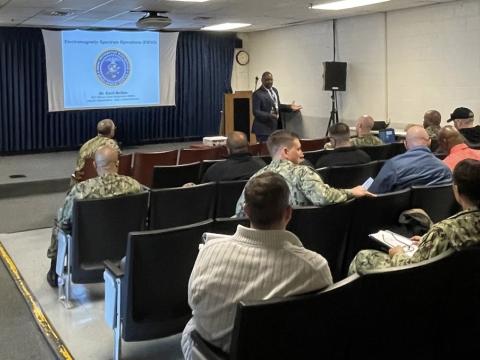Ending Government's Private-Sector Envy
 |
Some government phrases should be retired. By far, the most destructive is, “That’s not the way we’ve always done things.” Those words have sapped the life out of more innovative ideas, change and evolution than perhaps any others. But right behind that idea is the concept that the private sector does everything right and the public sector ... well ... does not.
This public-sector envy is insidious because it feeds the false notion that government cannot do anything right and that public employees—and public service—can be somehow self-defeating. It contains an inference that the problems government faces are somehow intractable; that government cannot—and does not—change; and that somehow government performance is an oxymoron. It feeds the mischaracterization that people cannot make a difference.
Beyond all that, it may not even be true.
One point is very clear: Government managers can learn important lessons from the private sector. And government, as with most organizations in the public or private sectors, can improve performance. But in the end, the public-private comparison is unfair. Too often it entails an apples-to-oranges comparison that simply is not valid. Those in the government world and keen observers of it understand that “the government” actually is hundreds of different organizations. Similarly, the private sector is made up of thousands of different organizations. In general, private-sector envyists point to particular organizations that are exceeding in specific areas, and they often compare the best of the best to the government average. For too long, government agencies may have been bludgeoned by this unfair comparison to the private sector.
The Obama administration deserves credit for emphasizing government performance. Performance—and competence—constituted a cornerstone of Obama’s presidential campaign.
The focus on performance, of course, is nothing new. Back in the
But there are some inflexible reasons that government performance is so complex. One is the lack of clear ways to measure performance. In the private sector, there is, literally, a bottom line—a profit and loss statement. In the end, that is the grand measure of performance. It is objective, and it can be relentless.
Government agencies and programs do not really have that kind of bottom line. In many ways, that is because the bottom line for most government programs is ... undefined. A case in point is port security. The Department of Homeland Security’s (DHS’s) task seems clear-cut: Prevent terrorists and criminals from sending dangerous and illegal items into the
So the measurement criterion is changing, and it no longer is black and white. In fact, the task is to determine the right shade of gray.
But that is not the only challenge for government agencies. In the private sector, an organization’s leadership is clear. But in government, consensus is lacking. Government agencies must deal with two sides of
Significant steps to untangling the government performance knot have taken place. The creation of the OMB’s Program Assessment Rating Tool was a major stride toward trying to provide objective data that would enable leaders to assess performance.
The first chief performance officer must understand the nuance that comes with government. In the end, he or she may have one of the more difficult jobs in government. That person will not do things the way they have always been done, and most federal agencies are eager to “perform.”
Frankly, if the new chief performance officer does just one thing—come up with an objective way of measuring agency performance—then that person will be the great performer.
Christopher J. Dorobek is the co-anchor of The Daily Debrief with Chris Dorobek and Amy Morris on




Comments